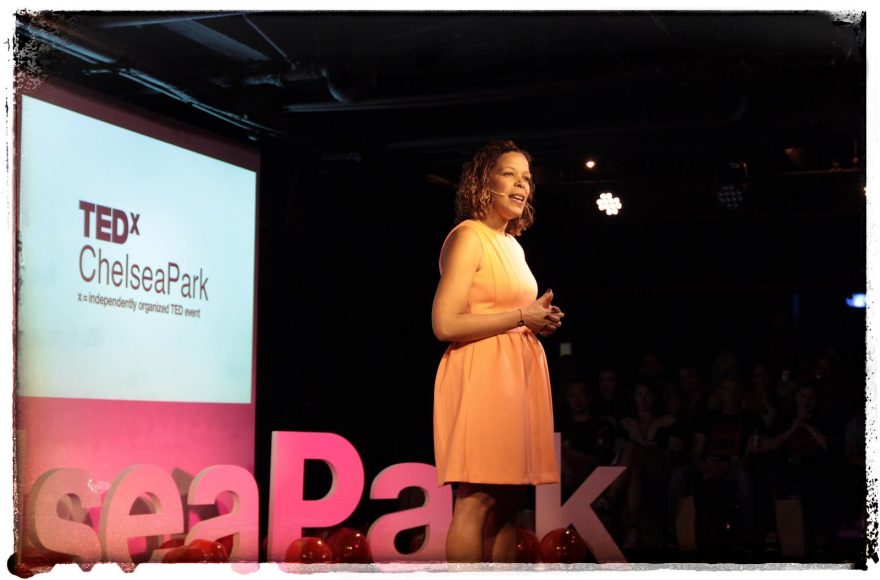In my years navigating the tech world, from being an IT professional to serving as a CIO and now CTO, I’ve encountered numerous challenges and triumphs. These experiences have been instrumental in shaping not just my career, but also my worldview, particularly concerning Diversity, Equity, and Inclusion (DEI). One issue that has continually surfaced, almost like a relentless echo, is what we commonly refer to as “the broken rung” on the corporate ladder.
What is the Broken Rung?
For those unfamiliar, the term “broken rung” refers to the career barrier that women face at the first crucial step up to manager. In a system that should ideally look like a ladder, the broken rung is a point where women are more likely to get stuck or overlooked. The disparity begins here and continues to widen, making it increasingly challenging for women to reach executive roles, often referred to as the C-suite.
To envision this, imagine a career trajectory as a ladder leading to the top levels of an organization. In an ideal world, each rung on this ladder represents a step up in one’s career – from entry-level positions to middle management, and then onto senior leadership roles, culminating in the C-suite. The ‘broken rung’ is essentially a missing step at this crucial early stage of the ladder, which disproportionately affects women.
For example, consider a scenario in a tech company where both men and women start their careers at the same entry-level position. When the opportunity for promotion to a managerial role arises, men are more frequently promoted, while women, despite similar qualifications and performance, are often passed over. This missed promotion – the broken rung – means that fewer women reach managerial positions. As a result, there are fewer women to promote to senior leadership roles over time, leading to a widening gender gap as one moves up the ladder. This gap not only impacts the individual women who miss out on career advancement opportunities but also has broader implications for the organization. With fewer women in managerial and leadership roles, there’s a significant loss in diversity of thought and perspective, which is crucial for innovative and balanced decision-making. Thus, the broken rung not only stunts the career growth of individual women but also hampers the overall health and progress of the organization.
The Numbers Don’t Lie
Statistical data clearly substantiates the existence of this broken rung. A comprehensive study conducted by McKinsey & Company in collaboration with LeanIn.org has revealed significant findings regarding women’s representation in executive roles. Since the initiation of this annual study in 2015, there has been a notable increase in women’s presence in the C-suite, rising from 17 percent to 28 percent. Despite this progress, the phenomenon known as the ‘broken rung’ continues to be a significant barrier, hindering women from advancing at the same rate as their male counterparts.
The report highlights a more pronounced disparity for women of color as they climb the corporate ladder:
- The representation of women of color sees a substantial decline of two-thirds when moving up the leadership hierarchy.
- In comparison to every 100 male employees promoted from entry-level positions to managerial roles, only 87 women are similarly elevated. This gap is even more pronounced for women of color, where just 73 are promoted for every 100 men reaching managerial levels.
- While women constitute 1 in 4 leaders in the C-suite, women of color represent only 1 in 16 of these top executive positions.
An entrenched disparity exists in the hiring and promotion practices within many organizations, where women are frequently evaluated and advanced based on their past achievements, while men are often assessed and elevated based on their perceived future potential. This unequal approach is a manifestation of what social scientists term performance bias. This bias presents a notable challenge, especially in the early stages of women’s careers. Given that women at this juncture typically have briefer professional histories and comparable job experiences as their male counterparts, performance bias can notably impede their progress at the crucial juncture of their first managerial promotion.
The Ripple Effect
The broken rung phenomenon extends its impact far beyond the initial leap into management roles. This systemic hurdle not only perpetuates but also exacerbates the existing gender imbalance within corporate structures. As women encounter obstacles in these early stages of their career advancement, their journey to the upper levels of management – often referred to as breaking the glass ceiling – becomes increasingly difficult. This disproportionate representation at higher levels of leadership creates a domino effect: decision-making processes and strategic directions in these organizations lack the richness of a diverse perspective. Consequently, this homogeneity in leadership can lead to organizational cultures and policies that are less inclusive and fail to adequately represent or address the needs and insights of a diverse customer base and stakeholder group.
The absence of women in leadership roles also means a loss of role models for aspiring female professionals, perpetuating a cycle where women’s potential to advance and lead remains underutilized. This situation not only impacts the women within these organizations but also reflects a broader loss for the tech industry and society, as diversity has been repeatedly shown to be a key driver of innovation and robust problem-solving. Ultimately, without a concerted effort to fix the broken rung, businesses risk stagnating in a cycle of uniformity, missing out on the full spectrum of talent and perspective that is critical for dynamic growth and relevance in an ever-evolving global market.
“Almost a quarter of women 30 and under say that their age has contributed to them missing out on a raise, promotion, or chance to get ahead.”
McKinsey & Company Report
The Silent Problem
The issue of the broken rung is particularly insidious due to its often unnoticed or unacknowledged nature in corporate environments. Many organizations take pride in their DEI initiatives, showcasing them as evidence of their commitment to creating a fair and diverse workplace. However, despite these efforts, the subtlety of the broken rung problem often goes unrecognized. This oversight is not just a minor hiccup; it is a fundamental flaw that undermines the very essence of those initiatives.
To effectively address the broken rung, DEI strategies need to be nuanced and multi-dimensional. It’s not enough to have generic policies that aim to improve diversity and inclusion broadly. There must be specific, targeted actions designed to identify and fix this early-stage career advancement barrier. This means conducting a deep dive into internal promotion data, understanding where the disparities lie, and implementing focused mentorship and development programs for women at the critical juncture of their first potential promotion.
Addressing this silent problem may require a cultural shift within organizations. It involves cultivating an environment where the identification and discussion of subtle biases are encouraged and acted upon. Leadership must be trained to recognize and actively counteract the biases that contribute to the broken rung. This could include unconscious bias training, re-evaluating criteria for promotions, and creating more transparency in the advancement process.
Additionally, companies should engage in open dialogues with employees about the challenges they face in career progression. This could involve regular check-ins, anonymous surveys, or forums where employees can share their experiences and provide feedback on the effectiveness of existing DEI measures. Such conversations can uncover valuable insights into how policies play out in practice and what changes are needed to make them more effective.
In essence, to tackle the issue of the broken rung effectively, companies must look beyond surface-level DEI efforts and delve into targeted strategies that address specific barriers. This approach not only fosters a more equitable and inclusive work environment but also ensures that DEI initiatives have a tangible impact on the career trajectories of women in the organization.
Breaking the Cycle
Addressing the challenge of the broken rung in corporate career ladders necessitates a multifaceted approach, starting with heightened awareness and followed by deliberate, strategic actions. As an experienced speaker on DEI topics, I have come to realize the critical importance of bringing conversations about the broken rung into the mainstream. These issues need to be more than just a footnote in DEI discussions; they should be a central topic of discourse in corporate settings, from informal team meetings to the highest levels of boardroom discussions.
To initiate this change, it’s crucial for organizations to recognize the broken rung not as an isolated issue but as a systemic problem that requires comprehensive strategies to address. This includes conducting internal audits of promotion rates and leadership demographics to identify where the discrepancies lie. Armed with this data, organizations can begin to implement targeted initiatives aimed at closing the gap.
One such initiative could be the development of mentorship and sponsorship programs specifically designed for women in the early stages of their careers. These programs should be more than just advisory in nature; they should actively seek to propel women into managerial roles and provide the necessary support to thrive in these positions.
Additionally, there should be a re-evaluation of the criteria used for promotions. Often, these criteria are biased, even if unintentionally, towards qualities or experiences that men are more likely to possess. By broadening these criteria to include a diverse range of leadership styles and experiences, organizations can create a more level playing field.
Leadership training and development programs also play a crucial role. These programs should not only be accessible to women but also tailored to address the unique challenges they face in the workplace. This could include training in areas like negotiation, assertiveness, and navigating corporate politics.
Creating accountability mechanisms is another key step. This might involve setting specific goals for women’s representation at various levels of management and tying these goals to leadership performance metrics. Such accountability ensures that the efforts to fix the broken rung are not just well-intentioned but result in tangible outcomes.
Finally, fostering an organizational culture that values and celebrates diversity is essential. This involves regular dialogue about the importance of diverse leadership and the active dismantling of any cultural barriers that may impede women’s advancement.
As a woman in tech, I am committed to using my platform to bring about substantive change. While the broken rung is just one of several barriers keeping women from the C-suite, its impact is far-reaching. The corporate ladder should be an equal-opportunity climb, and fixing this rung is a critical step towards that ideal.
It’s not just a women’s issue; it’s a business issue, a societal issue, and most importantly, a human issue. By addressing the broken rung, we’re not just elevating women; we’re elevating the entire corporate ecosystem.






1 comment